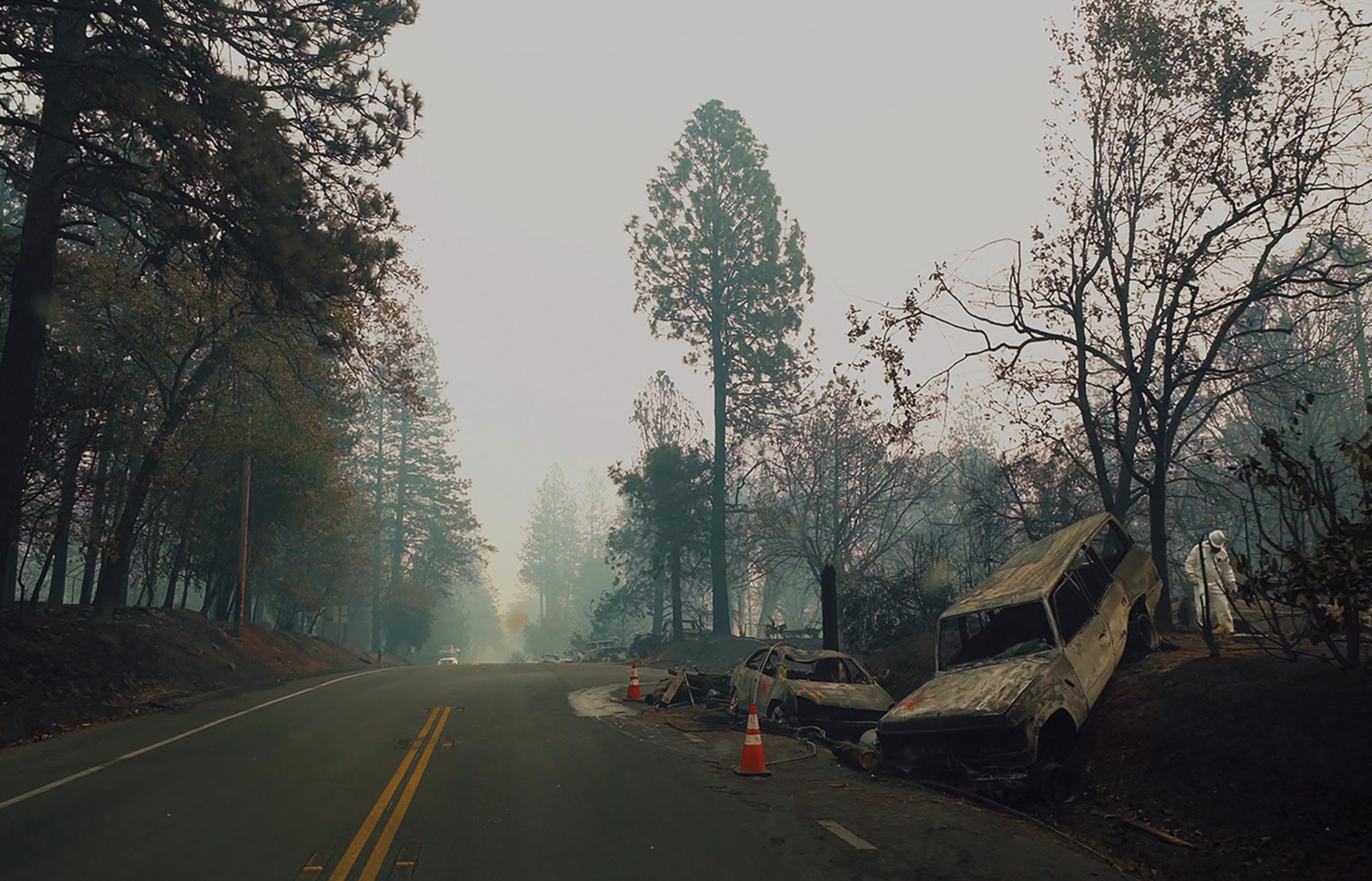Save Something Small
Filmmaker Katharine Parsons ’74 tells the story of the animal rescuers who braved the California wildfire burn zones to reunite beloved pets with their families.
Awildfire engulfs your neighborhood in the middle of the night. The flames are moving eight feet a second. The power is out, so you can barely see. There’s no time to grab much, maybe not even your shoes. You call your dog, who dutifully follows you to the car as your family escapes.
But your cat is nowhere to be found. For thousands of residents of Northern California, this nightmare was reality.
As the Tubbs Fire ignited in October 2017, Katharine Parsons ’74 was far from the flames, at home on her 87-acre horse farm an hour north of Toronto and working on her third screenplay. Parsons, who studied chemistry at Conn, had recently retired from her acupuncture practice. She was looking forward to lots of time to write.
She had completed a novel but had enjoyed dabbling in film in high school, “before they were digital, when you were splicing and pasting things together,” she recalls, and wanted to learn screenwriting to adapt her book. She took an online course and got “absolutely hooked.” In 2017, Parsons earned a master certificate from the acclaimed ScreenwritingU program and created her film company, Ravenshoe Media.
“Screenwriting melded my ability to write with my interest in photography and film,” says Parsons, who had previously done some photojournalism work covering the four-eyed fish of the Galapagos Islands.
But cats, not fish, would drive her most prolific project to date.
Parsons was scrolling through Facebook one day when she came across real-time status updates by a fellow filmmaker friend about a wildfire in California. It was the Tubbs Fire, which would ultimately burn nearly 58 square miles and destroy 5,643 structures, half of which were homes in Santa Rosa, a city an hour north of San Francisco. It would become the most destructive wildfire in California’s history—until the Camp Fire a year later, which was four times worse.
Then Tucker the feline appeared on her social media feed. “My friend started posting all these lost animal stories,” Parsons recalls, and the one about a badly burned cat brought into Sonoma County Animal Services by a Pacific Gas and Electric Company worker caught her attention.
In just an hour, Tucker’s photo had been shared hundreds of times and his family was located. More reunions followed. Families whose neighborhoods had been incinerated held out hope, posting photos of their missing pets—mainly cats—as agencies shared photos of pets rescued from the burn zone. Volunteers around the world began to match them up.
“Some weren’t microchipped or, if they were, the phones linked to the numbers associated with the chips had burned with the homes, so they were relying on the public,” Parsons explains. “It became Facebook’s largest lost pet initiative in their history.”
Parsons couldn’t take her eyes off the screen. “I put aside the screenplay I was working on and I just became glued to the stories about these cats.”
And the idea for a documentary was born.




